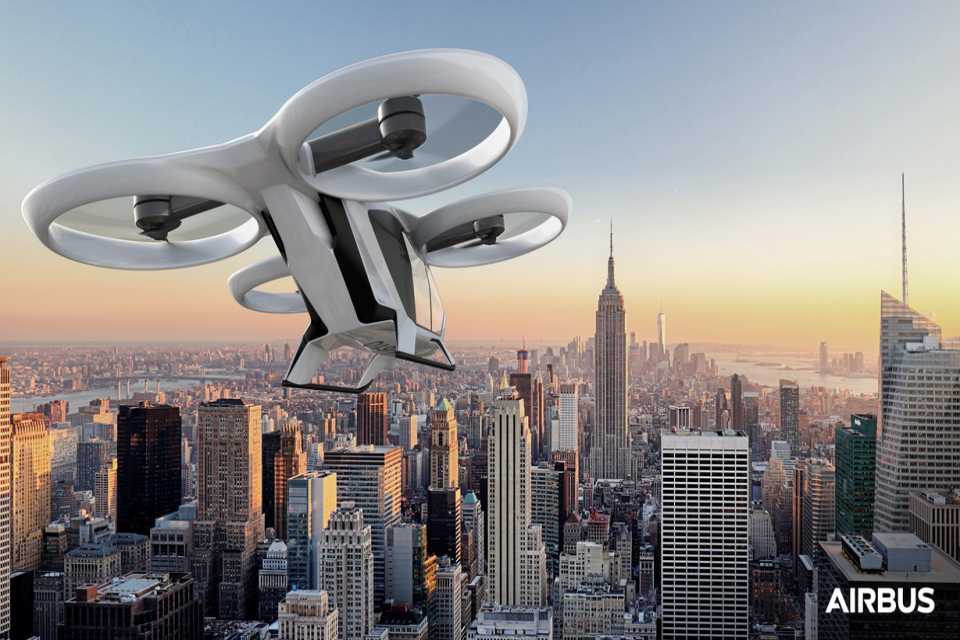Aerospace
Airbus and early stage investor HAX launch a call for start-ups

Toulouse, 27 September 2017 – Airbus, a global leader in aeronautics, defence & space and related services, and HAX, the world’s most active early stage investor in hardware start-ups, have joined forces to explore the future of urban air mobility through a four-month accelerator programme based in Shenzhen, China.
“Transportation in megacities needs fresh ideas to improve the way we live,” says Mathias Thomsen, Urban Air Mobility General Manager at Airbus. “We believe that adding the vertical dimension to urban mobility will improve the current congested megacity transport systems.”
“Airbus’ technical expertise and insights are a perfect complement to our capabilities,” says Duncan Turner, Managing Director at HAX.
Airbus, in partnership with HAX, will help bring these ideas from prototypes to market faster and accelerate the pace at which it can commercialise innovative ideas to shape the future of urban air mobility.
The collaboration will be an exclusive four-month urban air mobility acceleration programme at HAX’s world-class premises in Shenzhen. Early-stage start-ups focused on developing technologies that address the following challenges are invited to apply:
- Urban air transport vehicle technology;
• Aerial sense and avoid technology;
• Airport runway and landing detection systems;
• Emergency safety technology for airborne vehicles;
• Infrastructure for airborne transport vehicles;
• Autonomous airborne vehicle technology;
• Aerial manoeuvres decision making and support systems;
• Air traffic management systems;
• Aerial collision detection and avoidance systems;
• Battery packaging and management systems for airborne vehicles.
Selected applicants will receive a minimum up-front investment of 100,000 USD, as well as technical guidance and hands-on help from both Airbus and HAX experts to turn prototypes into a reality. Business expertise will complement engineering talent to ensure the sustainability of the projects.

Aerospace
Boeing Transfers Rocket Stage to NASA, Paving Way for Human Moon Mission

Boeing has achieved a significant milestone by providing NASA with the second core stage of the Space Launch System (SLS) rocket.
This crucial component, crafted at NASA’s Michoud Assembly Facility (MAF), is set to propel the Artemis II crew into lunar orbit, marking humanity’s return to deep space after a 50-year hiatus.
The monumental Boeing-built rocket stage, the largest element of the Artemis II mission, will embark on a journey aboard the Pegasus barge, traveling 900 miles to NASA’s Kennedy Space Center.
Comparison of two legendary aircraft B777x vs B747 aircraft:Click here
Upon arrival, it will be meticulously integrated with other essential Artemis II components, including the upper stage, solid rocket boosters, and NASA’s Orion spacecraft within the iconic Vehicle Assembly Building. This intricate integration process is a vital step toward the eagerly anticipated Artemis II launch, slated for 2025.
“Boeing-built products helped land humankind on the moon in 1969, and we’re proud to continue that legacy through the Artemis generation,” remarked Dave Dutcher, vice president and program manager for Boeing’s SLS program. “Together, with NASA and our industry partners and suppliers, we are building the world’s most capable rocket and paving the way to deep space through America’s rocket factory in New Orleans.”
NASA, Lockheed Martin Reveal X-59 Quiet Supersonic Aircraft:Click here
The delivery of Core Stage 2 marks a significant achievement in the evolution of the SLS rocket. Towering over 200 feet and powered by four RS-25 engines, this core stage, coupled with two solid-fueled booster rockets, will generate a staggering 8.8 million pounds of thrust. This immense power is crucial to launching Artemis II and future missions into the vast expanse of space.
The SLS rocket stands unparalleled in its capability to transport both crew and substantial cargo to the moon and beyond in a single launch. Its extraordinary capacity will facilitate the delivery of human-rated spacecraft, habitats, and scientific missions to destinations including the moon and Mars, ushering in a new era of space exploration.
-

 Travel1 week ago
Travel1 week agoAir India to Expand US Operations with Three New Routes After a Decade
-

 Travel2 weeks ago
Travel2 weeks agoWhy We Should Avoid These Stamps in a Passport
-

 Airlines1 month ago
Airlines1 month agoInvestigations Reveal Fake Chinese Titanium in Boeing and Airbus Jets
-

 Tech4 weeks ago
Tech4 weeks agoChina’s CATL Plans 1,800-Mile Electric Plane Launch by 2027
-

 Airport3 days ago
Airport3 days agoTop 10 Largest Airports in the World by Size
-

 Aerospace4 weeks ago
Aerospace4 weeks agoChina’s Fighter Jets Turn Wings into Autonomous Drones
-

 Airlines4 days ago
Airlines4 days agoAir India Rolls Out A350s for Delhi-New York JFK and Newark Routes
-

 Defence3 weeks ago
Defence3 weeks agoBoeing Enhances Chinook with New Engines and Block II Upgrades at $96 Million







